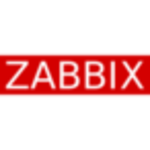What is our primary use case?
We implemented AppDynamics to have a clear, real-time monitoring solution for our critical business systems.
We have two tenants; one for production and the other for our quality control environment. We are using more than fifty probes, including application and database probes.
Our company is worldwide, across geography. We are using the public cloud deployment model.
How has it helped my organization?
We have gained a lot from this solution because it helps us to check what is there in terms of exceptions, and so on. We were able to correct problems, which led to an increase in availability, time savings, and performance for our solutions.
What needs improvement?
We are having a problem where one of our tenants has had issues with availability over the past two months. There is a lot of downtime for the SaaS tenant. Based on the user experience feedback that we have had, I think that the most important thing to improve is the availability of the SaaS, the cloud environment.
The mobile application needs to be improved.
We are evaluating a solution from SAP, and we are interested in is seeing the integration or the interface, and what we can get out of these new probes. We had a conference call with AppDynamics and challenged them to resolve the SAP solution monitoring so that it works side-by-side with our critical applications.
For how long have I used the solution?
More than two years.
What do I think about the stability of the solution?
We are having availability issues with the SaaS.
What do I think about the scalability of the solution?
In terms of scalability, this solution is good and has worked for us. With our licensing model, each time we have a need or requirement, we have our probes available for new solutions in less than forty-eight hours.
How are customer service and technical support?
Technical support for this solution is mixed. We are using a local outsourcing company in Portugal as our contact for AppDynamics. They keep in touch with us every week, so we don't have any problem.
The problem has to do with reaching out to our account manager. Sometimes, we simply receive no response from them. For instance, we have sent them emails related to the cloud environment stability issues two weeks ago, and we still have not received a response from AppDynamics. This is a little bit of a struggle for us.
Which solution did I use previously and why did I switch?
We are working with an outsourcing company, and have used products from Micro Focus.
How was the initial setup?
The initial setup of this solution is straightforward.
What's my experience with pricing, setup cost, and licensing?
In terms of pricing, I feel that when you compare the benefits that we get to the price that we paid, it is reasonable.
Which other solutions did I evaluate?
We did a proof of concept with the AppDynamics and also with the Dynatrace. The feedback that we received from our users, and from the IT department, was that the AppDynamics interface was more user-friendly than that of Dynatrace.
What other advice do I have?
We collect user experience feedback from many countries, all over the world.
We have already recommended this product to some of our partners, and they have implemented it based on our advice.
This is a good product, but we still have issues with the cloud and stability.
I would rate this solution a seven out of ten, due to stability issues and no feedback from EMEA AppDynamics.
Disclosure: My company does not have a business relationship with this vendor other than being a customer.


















